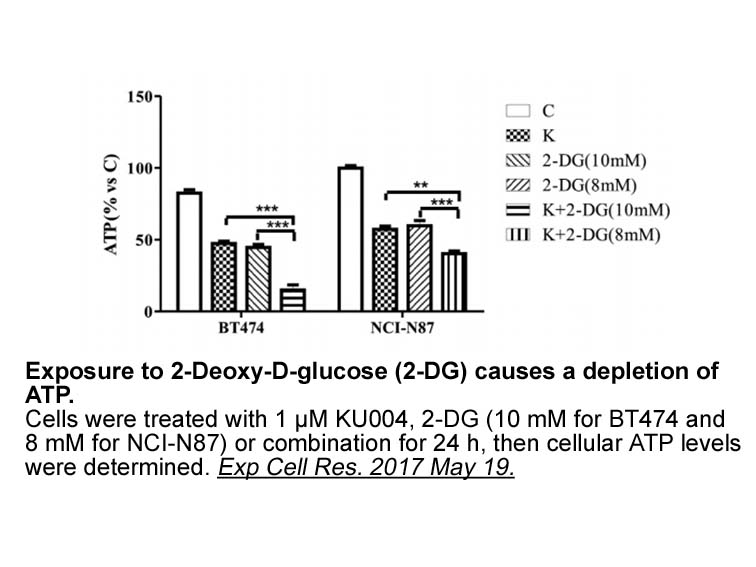Archives
The central problem in amnesia developing following impairme
The central problem in amnesia developing following impairment of long-term memory consolidation or reconsolidation is a question of the underlying mechanisms, whether it is caused by impairment of retrieval or memory storage mechanisms [3,8,9,[15], [16], [17], [18]]. To answer this question, several experimental approaches are usually used. Spontaneous memory recovery in amnestic animals and memory recovery due to conditioned or unconditioned stimuli presentation in a new context have alternatively been studied [3,8,9,15]. If memory trace is behaviorally expressed in this experimental paradigm, it is suggested that amnesia can be explained by problems in memory retrieval mechanisms or partial memory storage loss. Nonetheless, if in these behavioral conditions, memory trace cannot be behaviorally expressed, especially for a long time after amnesia induction, it is suggested to be the result of memory trace erasure.
However, it should be noted that at present there is no persuasive experimental evidence to distinguish these two scenarios [9,[17], [18], [19], [20], [21]]. Even in cases in which amnesia persisted for a long time after memory impairment, it can be supposed that the memory is preserved. However, it cannot be expressed at the behavioral level due to impairment of the retrieval mechanisms. In contrast, in cases in which memory impairment is transient and can be recovered spontaneously or by presentation of different reminding stimuli, it cannot be excluded that memory trace impairment could be compensated by the passage of time or is a result of recovering procedures.
Another approach to studying amnesia mechanisms is retraining of amnestic animals. In some cases, this approach can be informative in determining the degree of preservation of impaired memory trace and possibility of its retrieval [18]. It is logical to suggest that there is a direct correlation between the cyclin dependent kinases of amnesia and the number of paired conditioned and unconditioned stimuli presented during second training, which are necessary for memory formation.
Neurotransmitter systems play an important role in memory and amnesia mechanisms, involving glutamate, adrenergic, cholinergic receptors, etc [2,5] . In experiments on vertebrates and invertebrates using different training models, it was found that memory reconsolidation involves molecular events that are dependent on NMDA (N-methyl-D-aspartate) glutamate receptors [2,10,[22], [23], [24], [25], [26], [27]]. In particular, NMDA receptor participation in the mechanisms of conditional food aversion was revealed [[28], [29], [30], [31], [32]]. Receptors, similar to NMDA-glutamate receptors, were identified in many invertebrates, including mollusks [33]. Furthermore, it also revealed monoaminergic system participation in the memory reconsolidation, involving serotonin receptors [8,23,28,[34], [35], [36], [37], [38], [39], [40], [41], [42]]. In experiments on snails, it was shown that serotoninergic system functioning impairment using selective neurotoxins did not change the memory after one test but resulted in both the contextual and the conditioned food aversion memory impairment after repeated memory reactivation [34]. Furthermore, authors described serotonergic neurons, which participated in the memory reactivation and were involved in the reconsolidation process. 5-HT1, 5-HT2, and various other less reliable serotonin-like receptors were identified in mollusks [[43], [44], [45]].
Available data illustrate that different neurotransmitter systems maintaining memory mechanisms have their own peculiarities. Thus, it was demonstrated that the glutamatergic system is involved mainly in the mechanisms of long-term memory formation and storage. However, monoaminergic systems, including serotoninergic systems, provide modulation of these mechanisms ([40,44,[46], [47], [48], [49]]). This provides strong clues to suppose that the nature of amnesia developing after impairment of memory reconsolidation can vary significantly due to differential usage of glutamate receptor antagonists or monoamine receptor antagonists as amnestic agents [50].
. In experiments on vertebrates and invertebrates using different training models, it was found that memory reconsolidation involves molecular events that are dependent on NMDA (N-methyl-D-aspartate) glutamate receptors [2,10,[22], [23], [24], [25], [26], [27]]. In particular, NMDA receptor participation in the mechanisms of conditional food aversion was revealed [[28], [29], [30], [31], [32]]. Receptors, similar to NMDA-glutamate receptors, were identified in many invertebrates, including mollusks [33]. Furthermore, it also revealed monoaminergic system participation in the memory reconsolidation, involving serotonin receptors [8,23,28,[34], [35], [36], [37], [38], [39], [40], [41], [42]]. In experiments on snails, it was shown that serotoninergic system functioning impairment using selective neurotoxins did not change the memory after one test but resulted in both the contextual and the conditioned food aversion memory impairment after repeated memory reactivation [34]. Furthermore, authors described serotonergic neurons, which participated in the memory reactivation and were involved in the reconsolidation process. 5-HT1, 5-HT2, and various other less reliable serotonin-like receptors were identified in mollusks [[43], [44], [45]].
Available data illustrate that different neurotransmitter systems maintaining memory mechanisms have their own peculiarities. Thus, it was demonstrated that the glutamatergic system is involved mainly in the mechanisms of long-term memory formation and storage. However, monoaminergic systems, including serotoninergic systems, provide modulation of these mechanisms ([40,44,[46], [47], [48], [49]]). This provides strong clues to suppose that the nature of amnesia developing after impairment of memory reconsolidation can vary significantly due to differential usage of glutamate receptor antagonists or monoamine receptor antagonists as amnestic agents [50].